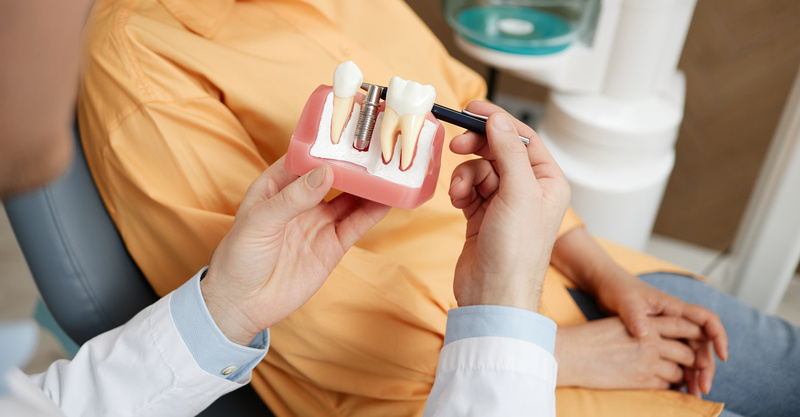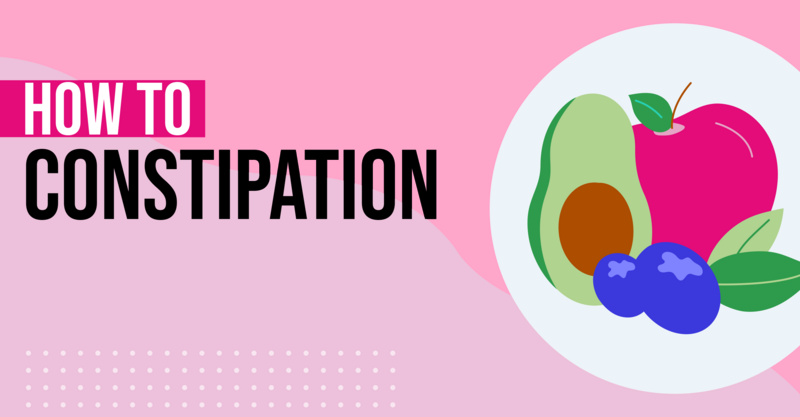Key Points
- Temporomandibular Joint Dysfunction (TMJ) is a jaw joint disorder causing pain, discomfort, and other symptoms like headaches and difficulty in opening or closing the mouth.
- TMJ can often be managed at home through dietary changes, stress management, and targeted exercises, as suggested by the National Institute of Dental and Craniofacial Research.
- The disorder can result from injury, arthritis, teeth grinding, or jaw alignment issues and can be worsened by bad posture, excessive chewing, and high-stress levels.
- Various treatment options are available ranging from over-the-counter pain relievers to physical therapy and injections, with surgical intervention as a last resort.
- Preventive measures and self-care strategies, such as maintaining good posture, practicing relaxation techniques, and limiting hard foods, can effectively manage TMD.
Temporomandibular Joint Dysfunction (TMJ) is a common condition that affects the jaw joint and surrounding muscles, leading to pain and discomfort, according to the National Institute of Dental and Craniofacial Research (NIDCR). Whether it's through dietary adjustments, stress management, or targeted exercises, there are numerous ways to address TMJ pain without the need for extensive medical intervention, according to the NIDCR. This article will explore effective strategies for managing TMJ pain, focusing on the fact that most TMJ disorders can be treated at home through simple lifestyle changes. By adopting healthier habits and incorporating self-care techniques, individuals can alleviate symptoms and improve their overall quality of life.
What Is TMJ Disorder?
TMJ disorder refers to a range of conditions that affect the jaw joint and the muscles controlling jaw movement, according to the NIDCR. They explain that the temporomandibular joint connects the jawbone to the skull, allowing for essential functions such as chewing, speaking, and swallowing. When this joint becomes dysfunctional due to various factors—such as injury, arthritis, teeth grinding, or jaw alignment issues—it can lead to pain, discomfort, and restricted movement. Understanding TMJ disorder is crucial for effective management and treatment, as it can significantly impact daily activities and overall well-being.
The NIDCR explains that the temporomandibular joint (TMJ) is a complex structure that consists of bones, cartilage, and ligaments, all working together to facilitate jaw movement. It operates like a hinge, allowing the jaw to open and close smoothly. However, when the delicate balance of this joint is disrupted, it can result in a range of symptoms. Common signs of TMJ disorder include jaw pain, clicking or popping sounds during movement, headaches, and difficulty in fully opening or closing the mouth.
Types of TMJ Dysfunction
Understanding the various types of temporomandibular joint dysfunction (TMD) is essential for effective diagnosis and treatment. TMDs are typically classified into three main categories, each representing different underlying causes and manifestations of the disorder. Recognizing these categories can help individuals and healthcare providers develop targeted strategies for management and relief, according to the NIDCR.
-
Myofascial Pain: This category involves discomfort and pain in the muscles that control jaw movement. It is often associated with muscle tension, stress, or overuse, leading to soreness and restricted movement.
-
Internal Derangement of the Joint: This type refers to physical changes within the joint itself, such as a displaced disc, or damage to the cartilage. Symptoms may include clicking or popping sounds during jaw movement and limited range of motion.
-
Degenerative Joint Disease: This category encompasses conditions like osteoarthritis or rheumatoid arthritis that affect the joint's structure and function over time. Symptoms often include chronic pain, swelling, and stiffness in the jaw area.
TMJ Dysfunction Symptoms
Recognizing the symptoms of TMD is crucial for early intervention and effective management, according to the National Library of Medicine (NLM). They explain that the range of symptoms can vary significantly among individuals, often leading to discomfort that affects daily activities. The NLM notes the following common symptoms:
-
Jaw pain and stiffness
-
Shoulder and neck pain
-
Headaches or migraines
-
Tinnitus (a ringing in your ears)
-
Difficulty or pain while chewing
-
Difficulty opening and closing your mouth
-
Clicking or popping sounds when moving the jaw
-
Facial pain or swelling
-
Earaches or a feeling of fullness in the ears
TMJ Dysfunction Causes
Understanding the causes of TMJ is essential for identifying potential risk factors and implementing effective treatment strategies, according to the NLM. They note that TM can arise from a variety of sources, often involving a combination of physical, psychological, and environmental factors. The following are common causes of TMJ, as listed by the NLM:
-
Grinding your teeth (bruxism)
-
Jaw injury or trauma
-
Arthritis in the joint
-
Stress and anxiety, leading to muscle tension
-
Misalignment of the teeth or jaw (malocclusion)
Factors That Worsen Jaw Pain
Several factors can exacerbate jaw pain associated with TMJ, making it essential to identify and address these triggers for effective management. Understanding these aggravating factors can help individuals make informed lifestyle choices to alleviate discomfort and promote better jaw health, according to the NLM. They list the following as common behaviors and habits that may worsen TMJ symptoms, providing insight into how to minimize their impact:
-
Bad posture, especially while sitting or using electronic devices
-
"Nervous habit" behaviors, such as chewing on pens or other objects
-
Excessive chewing of ice or gum
-
Taking food bites that are too big for your mouth
-
Clenching or grinding your teeth during the day
-
Sleeping on your stomach, which can strain the jaw and neck
-
High-stress levels that lead to increased muscle tension in the jaw area
TMJ Dysfunction Treatment
Managing TMJ often involves a combination of medication and non-surgical treatments tailored to alleviate pain and restore function, according to the NLM. They explain that the goal of these approaches is to reduce inflammation, relieve muscle tension, and improve jaw mobility.
Below are various treatment options from the NLM, including both pharmacological and therapeutic methods that can effectively address symptoms and enhance quality of life:
-
Pain Relievers: Over-the-counter pain relievers, such as acetaminophen or ibuprofen, can help reduce discomfort and improve daily functioning.
-
Anti-inflammatory Medication: Nonsteroidal anti-inflammatory drugs (NSAIDs) can alleviate inflammation and swelling in the jaw joint, providing relief from pain.
-
Muscle Relaxers: Prescription muscle relaxants may be recommended to help reduce muscle tension and spasms in the jaw area.
-
Antidepressants: Certain antidepressants, particularly tricyclics, can help manage chronic pain and reduce associated symptoms, even in individuals without depression.
-
Physical Therapy: Targeted physical therapy can include exercises to strengthen jaw muscles, improve flexibility, and promote relaxation techniques.
-
Injections in Trigger Points: Corticosteroid or botulinum toxin (Botox) injections can be administered to specific trigger points in the jaw muscles to reduce pain and improve function.
-
Ultrasound Therapy: This non-invasive treatment uses sound waves to promote healing and reduce inflammation in the affected area, helping to alleviate pain.
-
Heat and Cold Therapy: Applying heat or cold packs to the jaw can help soothe pain and reduce swelling, providing immediate relief.
-
Occlusal Splints or Night Guards: Custom-made dental devices can help prevent teeth grinding and clenching during sleep, reducing strain on the jaw joint.
TMJ Dysfunction Surgery
While many cases of TMJ can be effectively managed with non-surgical treatments, according to the NLM. They explain that some individuals may require surgical intervention when conservative approaches fail to provide relief. Surgical options aim to address underlying structural issues within the joint or surrounding tissues, helping to restore function and alleviate pain. Below are several surgical procedures commonly performed to treat TMJ, according to the NLM:
-
Arthrocentesis: This minimally invasive procedure involves the insertion of a needle into the joint space to remove excess fluid or debris. It can help relieve pressure and inflammation, often providing immediate pain relief.
-
TMJ Arthroscopy: This procedure uses a small camera and instruments inserted through tiny incisions to visualize and treat problems within the joint. It can be used to remove inflamed tissue, reposition the disc, or address other joint abnormalities.
-
Modified Condylotomy: This surgical technique involves repositioning the condyle (the rounded end of the jawbone) to alleviate pain and improve jaw function. It is typically performed when there is significant structural damage or misalignment in the joint.
-
Joint Replacement Surgery: In severe cases of TMD where other treatments have failed, a total or partial joint replacement may be necessary. This procedure involves replacing the damaged joint with an artificial implant to restore function and reduce pain.
Temporomandibular Joint Dysfunction Self-Care
Self-care plays a vital role in managing TMD and can significantly alleviate symptoms while promoting overall jaw health, according to the NLM. They explain that by incorporating simple lifestyle adjustments and home remedies, individuals can take proactive steps toward reducing discomfort and improving their quality of life.
Below are various self-care strategies that can be easily implemented at home to help manage TMD effectively, according to the NLM:
-
Try Over-the-Counter Medication: Utilizing non-prescription pain relievers, such as ibuprofen or acetaminophen, can help reduce pain and inflammation associated with TMD.
-
Use Cold Packs: Applying cold packs to the jaw for 15-20 minutes can help minimize swelling and numb pain, providing immediate relief.
-
Eat Soft Food: Opting for a diet of soft foods can reduce strain on the jaw, allowing it to rest and heal while minimizing discomfort during chewing.
-
Practice Good Posture: Maintaining proper posture while sitting and using electronic devices can help reduce tension in the neck and jaw, alleviating stress on the temporomandibular joint.
-
Try Relaxation Techniques: Engaging in relaxation practices, such as deep breathing, meditation, or yoga, can help reduce overall stress and muscle tension, which may contribute to TMJ symptoms.
-
Keep Your Teeth Slightly Apart: Allowing a slight gap between the teeth when at rest can help reduce pressure on the jaw joint and prevent clenching.
-
Avoid Chewing on Hard Objects: Steering clear of hard foods or objects, such as ice or pens, can prevent additional strain on the jaw and minimize the risk of exacerbating symptoms.
-
Apply Heat Therapy: Using a warm compress on the jaw can help relax tight muscles and improve blood circulation, providing soothing relief.
-
Perform Gentle Jaw Exercises: Incorporating gentle stretching and strengthening exercises can improve jaw mobility and reduce stiffness over time.
-
Stay Hydrated: Drinking plenty of water can help keep the muscles and joints lubricated, supporting overall joint health.
How to Prevent TMJ Pain
Preventing TMJ is essential for maintaining jaw health and avoiding the discomfort associated with this condition, according to the NIDCR. They note that by adopting proactive measures and making mindful lifestyle choices, individuals can significantly reduce their risk of developing TMD or exacerbating existing symptoms.
The NIDCR highlights several effective strategies for preventing TMJ pain, emphasizing the importance of self-care and awareness in daily routines:
-
Wear a Mouthguard at Night: Using a custom-fitted mouth guard during sleep can help protect the teeth and jaw from the effects of grinding or clenching, reducing strain on the temporomandibular joint.
-
Practice Meditation: Incorporating meditation and mindfulness practices into your daily routine can help manage stress levels, which is crucial since stress often contributes to muscle tension and jaw clenching.
-
Build Core Strength to Maintain Good Posture: Engaging in exercises that strengthen the core and back muscles can promote better posture, reducing the strain on the neck and jaw, which may help prevent TMD.
-
Limit Chewing Gum and Hard Foods: Reducing the consumption of chewing gum and hard or tough foods can minimize excessive jaw movement and prevent unnecessary strain on the joint.
When to See a Doctor for TMJ Dysfunction
Knowing when to seek medical attention for TMJ is crucial for effective management and relief, according to the NIDCR. They note that if you experience persistent jaw pain, discomfort, or other symptoms that do not improve with self-care measures or over-the-counter medications, it is essential to consult a healthcare provider. Prolonged pain may indicate an underlying issue that requires professional evaluation and treatment. A qualified healthcare professional can conduct a thorough assessment, provide a proper diagnosis, and recommend appropriate treatment options tailored to your specific needs. Early intervention can help prevent the condition from worsening and improve your overall quality of life.
Frequently asked questions
What is Temporomandibular Joint Dysfunction (TMJ)?
TMJ is a disorder affecting the jaw joint, causing symptoms such as pain, discomfort, headaches, and difficulty in opening or closing the mouth.What causes TMJ disorders?
TMJ disorders can result from injury, arthritis, teeth grinding, or issues with jaw alignment.How can TMJ be managed at home?
TMJ can often be managed at home through dietary changes, stress management, targeted exercises, maintaining good posture, and avoiding chewing on hard objects.What treatment options are available for TMJ?
Treatment options for TMJ range from over-the-counter pain relievers and anti-inflammatory medication to physical therapy and injections in trigger points. In severe cases, surgical intervention may be necessary.What are some preventive measures for TMJ?
Preventive measures include wearing a mouthguard at night, practicing meditation, building core strength, and limiting chewing gum and hard foods.What factors can worsen TMJ symptoms?
Factors such as bad posture, excessive chewing, and high-stress levels can worsen TMJ symptoms.When should I seek medical attention for TMJ?
It's crucial to seek medical attention if persistent jaw pain or discomfort does not improve with self-care measures or over-the-counter medications.Are there different types of TMJ disorders?
Yes, there are three main types of TMJ disorders: Myofascial Pain, Internal Derangement of the Joint, and Degenerative Joint Disease.


 LinkedIn
LinkedIn










